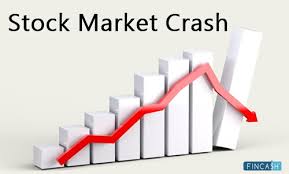Fra BNP Paribas:
KEY MESSAGES
The four stages of a plunge and recovery in the
equity market are: (1) the market sells off at oversold
levels; (2) rallies after the initial plunge; (3) retests the
lows; and (4) a broad-based rally, with most stocks
participating.
We believe we are still in the second stage as we have
seen some rallies recently as a result of the support
from central banks and governments.
We analyze multiple market indicators that, we believe,
could provide signals for the next market recovery and
need to be monitored closely.
Her er seks vigtige markedsindikatorer at holde øje med:
We have examined the various market indicators that
could signal the timing of a market recovery. At the
moment, indicators have not been triggered, which
suggest that it is still a bit early for investors to position for
a market rally.
1. 50-day simple moving average: The indicator is
defined as the percentage of stocks in an index where the
prices are above their 50-day moving average. This
percentage tends to tank below 10% at times of extreme
market corrections. We believe that markets recover when
this percentage rises back above this threshold.
The results of the backtest (page 6) prove this to be one of
the strongest indicators for long-term returns. Notably, the
only times when this indicator failed were in September
2001 with 12m returns of -11% for the S&P 500 and
August 2007 with -7% return for FTSE 100.
2. Relative Strength Index: The Relative Strength
indicator fluctuates between 0 and 100. It is usually used
as a gauge to define if a stock or an index is oversold (30)
or overbought (70). The index is measured using the ratio
of highest closing prices to lowest closing prices.
We studied the returns when this indicator rises above 30
on a 26-week basis, after dropping below this level in
previous market downturns (page 7). While we only saw
the indicator dropping below this level a few times in the
past 30 years, we note that it still shows decent
performances in the long-term. The backtest shows that
the indicator failed in September 2001 for both Stoxx
Europe 600 and FTSE 100, suggesting that it would not be
wise to use this as a sole indicator.
3. MACD Indicator: The Moving Average Convergence
Divergence (MACD) is a momentum indicator calculated
by subtracting a longer (26-periods) Exponential Moving
Average (EMA) to a shorter (12-periods) EMA. A buy
signal is triggered when the indicator is above its 10-day
EMA and a sell signal when it is below.
This tool uses moving averages to identify new trends. We
looked at the returns at periods where the percentage of
members of an index increased above 65%. The backtest
(page 8) shows this indicator gives strong positive buy
signals after previous market corrections. However, we
caution that the indicator has given a couple of false
alarms in the past 20 years – notably in February 2008 for
the SXXE and October 2001 for the SPX.
4. US BBB credit spreads: Stress in credit markets
remains a key market reversal indicator. We believe that
there is no durable rally in stocks without a simultaneous
recovery in credit markets. We define a buy signal for this
indicator as when credit spreads spike in the previous year
and then start to decline from the peak.
The backtest shows a good overall performance after
extreme market moves (page 9). Note that there are few
periods where the indicator fails. For instance, US credit
spreads slightly recovered in Nov 2001 and April 2008 but
went on to have bad performances in the following 12
months (-19% and -36% respectively).
5. Advance-decline index ratio: This is a momentum
indicator that measures the percentage of stocks in an
index contributing to the market’s rise. We defined a buy
signal for this indicator when this percentage is above 90%
while markets have crashed by 20% or more in the
previous year.
We note that the backtest (page 9) shows that this
indicator provides good buy signals for the most part.
However, it has shown some false market recoveries in the
past, especially in 2001.
6. VIX volatility index: Volatility is a common techical
indicator of market sentiment as investors tend to unwind
long position at times of market downturns. VIX has
reached extremely high levels as the virus outbreak
continues to spread (Fig. 8).
We looked at returns after periods where the VIX has
dropped below 40 after earlier rising above this level (page
10). We observed that this indicator has a strong ability to
detect market reversal in the short- and long-term. The
only period where this indicator failed was after September
2001.







